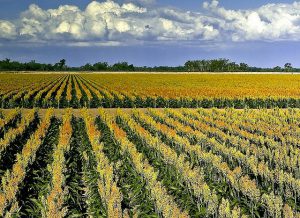Study examines gap between organic and conventional agriculture
 Photo credit: Gaye Launder
Photo credit: Gaye Launder
Newly published research in PLOS ONE has used U.S. agricultural production data to confirm that the gap between organic and conventional production is lower than had previously been estimated. Study authors analyzed publicly available USDA agricultural survey data from 2014 to compare yield estimates among crops within states. For example, the yield for organic potatoes grown in Idaho was compared to conventional potato yield in Idaho. When yields were averaged across all crops, organic yields were found to be about 20% lower than conventional yields, consistent with a recently published study that calculated a similar yield gap but still much lower than had been calculated in previous studies. When yield results were compared by crop type, results were variable. Overall, organic crops had lower yields. However, some crops showed no significant difference and in others—hay and silage in particular-- organic yields were higher than conventional yields. Because the USDA data does not include any information on farm management practices, it is impossible to infer reasons for variation in yields among crops and locations. The authors noted that the gap in organic yield merits “more organic-focused research to support these producers. In particular, efforts to improve available varieties for use in organic production may result in yield improvement via improved nutrient acquisition, pest resistance, competitive traits, or other gene by environment interactions.” They also suggested that variation among yields for different crops present potential opportunities for information sharing among conventional and organic producers.



